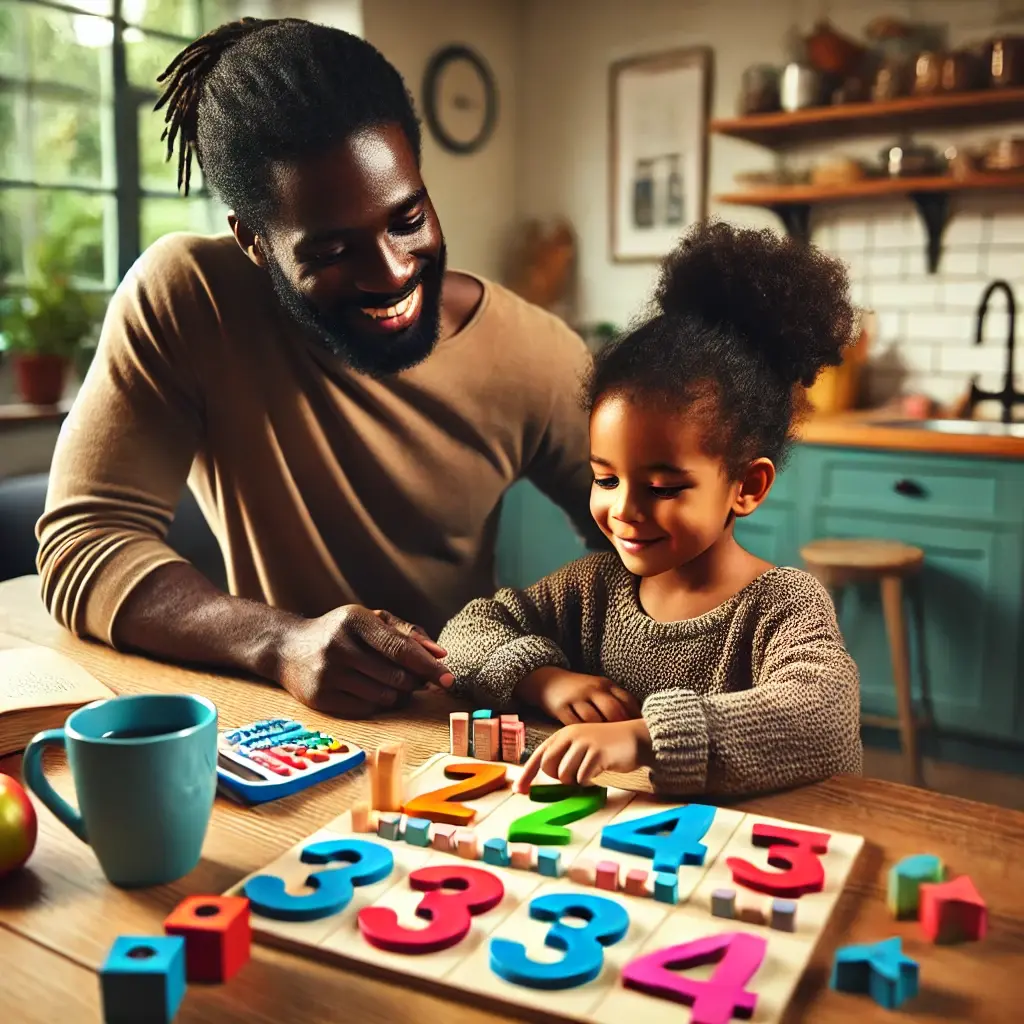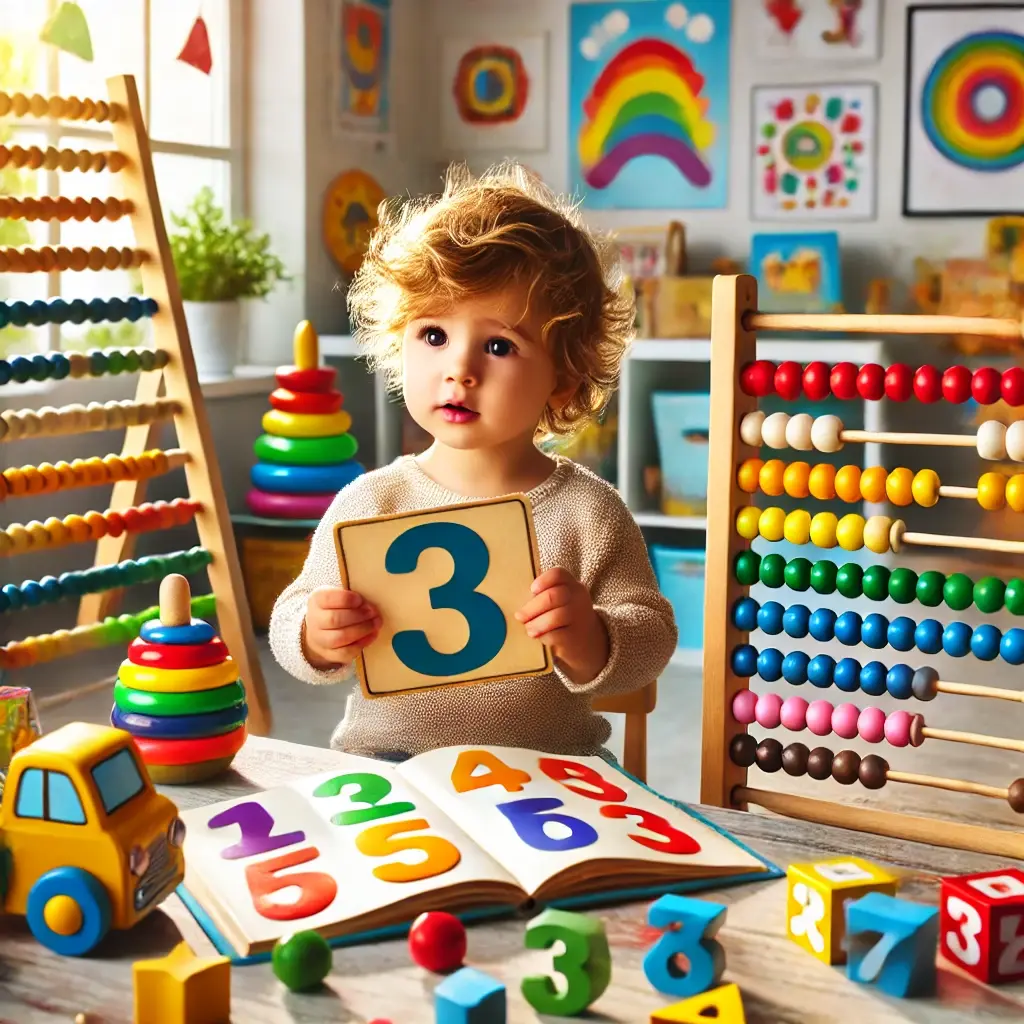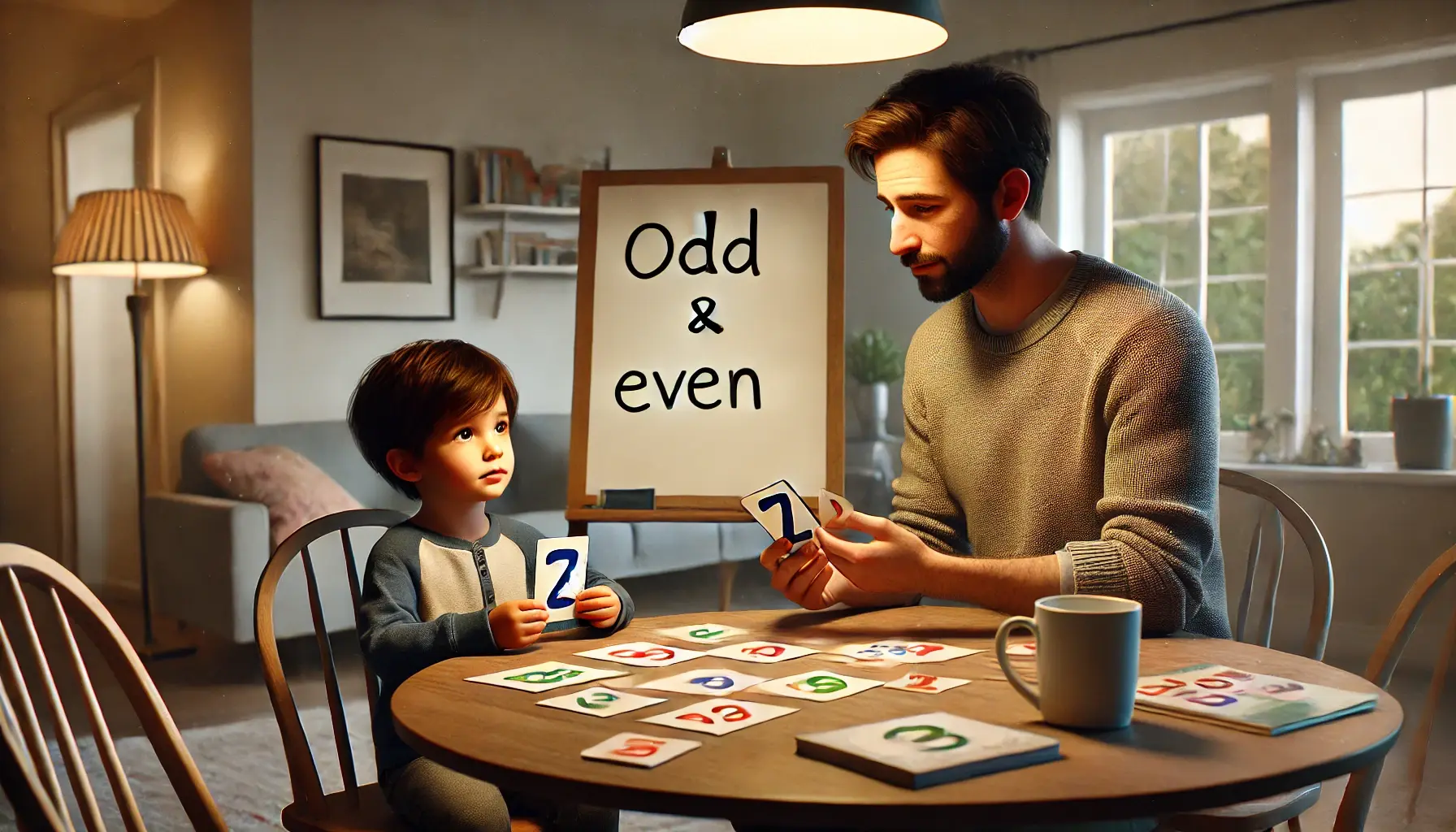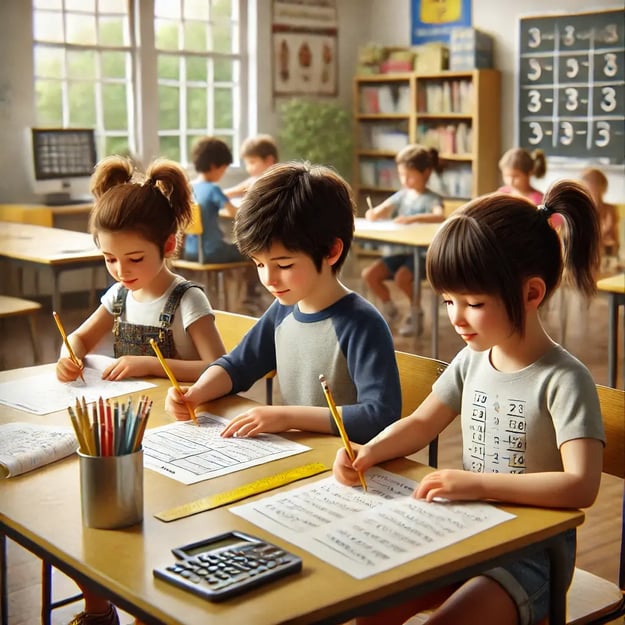
After building foundational math skills in 1st grade, children move on to 2nd grade, where they learn new math concepts. In 2nd grade, your child will build on what they’ve already learned, delving deeper into numbers, operations, and problem-solving. This year, they’ll strengthen their skills in addition and subtraction and start to explore the basics of multiplication and division. They’ll work with larger numbers, understand place value more thoroughly, and begin to tell time to the nearest five minutes. Your child will also get hands-on with money and basic geometry and start learning about fractions.
Here’s an overview of what 2nd graders typically learn in math and how these concepts contribute to their overall growth.
9 Important Second-Grade Math Topics and Skills
1. Mental Addition and Subtraction

In 2nd grade, one of the key math skills your child will develop is mental addition and subtraction. This involves solving basic math problems in their head without needing a pencil and paper. By practicing these skills, your child will become faster and more confident in handling numbers.
At this stage, your child will start with simple addition and subtraction facts, working with numbers up to 20. They’ll gradually move on to larger numbers, learning to add and subtract within 100, and even explore the concept of carrying over (in addition) and borrowing (in subtraction).
To make mental math easier, your child will learn strategies like breaking down numbers into smaller parts and rounding numbers to the nearest ten. For example, instead of adding 47 and 26 all at once, they might break it down to add 40 + 20 and then 7 + 6, combining the sums to get the final answer. And for rounding numbers, your child might round 48 up to 50 or 72 down to 70, making the addition or subtraction simpler.
2. Place Value and Expanded Form
In 2nd grade, your child will continue to build on what they learned about numbers in 1st grade, diving deeper into the concept of place value. This year, they’ll better understand odd and even numbers, working with one-digit, two-digit, and even three-digit numbers. Place value helps them see that each digit in a number has a special role—whether in the ones, tens, or hundreds place.
Your child will practice figuring out which digit stands for ones, tens, or hundreds in various numbers. They’ll also learn how to write numbers in words, making the connection between the digits they see and the words they say.
A big focus this year is on the expanded form. This means breaking down a number to show the value of each digit. For example, 267 would be written as 200+60+7 in expanded form. It’s fun for kids to see how numbers are together and understand what each part represents.
3. Complex Addition and Subtraction
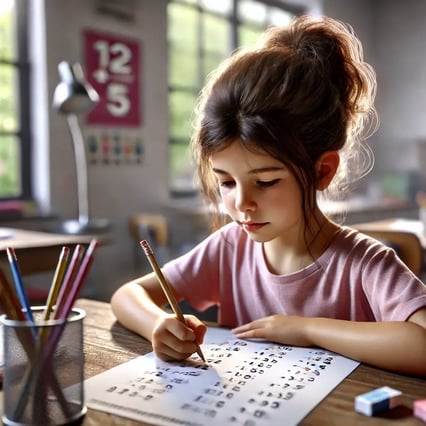
In 2nd grade, your child will take their addition and subtraction skills to the next level by working with numbers beyond single digits. This year, they’ll start tackling problems that involve adding and subtracting numbers with up to three digits. For example, they might solve 235 + 147 or 512 - 276, exciting steps that help them grow more confident with bigger numbers.
2nd grade math books present various problems that challenge your child to perform more complex addition and subtraction. They’ll also encounter word problems that require them to apply these skills in real-world situations, helping them see the practical side of math.
Your child will be introduced to the number line to make working with larger numbers easier. This tool helps them visualize how numbers move up and down as they add or subtract, making it easier to grasp the concept of working with bigger figures.
4. Coordination, Charts, and Graphs
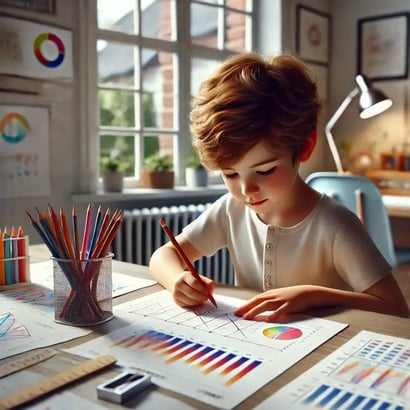
In 2nd grade, your child will start exploring the world of coordination, charts, and graphs—an important step in developing their data interpretation skills. This year, they’ll be introduced to the basics of graphing on a coordinate grid, learning how to use coordinates to plot images on a graph. It’s a fun and engaging way to help them understand how data can be represented visually.
Through this introduction, your child will get hands-on experience with different types of graphs, including pictographs, bar graphs, and line plots. They’ll learn to read these graphs, interpret the data they show, and even create their own. By practicing with these tools, your child will develop the ability to understand, analyze, and present information clearly and organized.
5. Geometry and Fractions
In 2nd grade, your child will begin to explore the basics of geometry and fractions, two fundamental concepts that lay the groundwork for more advanced math in later years. They’ll start by learning to identify shapes based on the number of sides they have, which helps them recognize and categorize different types of shapes.
Your child will also be introduced to geometric concepts such as endpoints, line segments, and angles. These ideas help them understand how shapes are formed and how different parts of a shape relate to each other.
As they delve into geometry, your child will also learn about fractions. Using shapes, they’ll discover how to divide a whole into equal parts and how to describe these parts using fractions. They’ll get familiar with terms like numerator and denominator, which are key to understanding how fractions work.
6. Word Problems
In 2nd grade, word problems become a key part of your child’s math learning journey. Nearly every lesson in the 2nd-grade curriculum includes word problems directly related to the topic. These problems are designed to help your child apply the math concepts they’re learning to real-life situations, making the lessons more engaging and practical.
Your child will encounter word problems across various topics, including simple and complex addition and subtraction, the number line, fractions, telling time, and even an introduction to simple multiplication. By working through these problems, your child will develop critical thinking skills and learn how to break down a problem, figure out what’s being asked, and use the appropriate math operations to find the solution.
7. Measurement
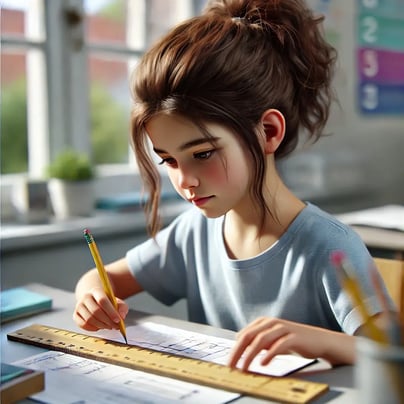
In 2nd grade, your child will start learning about measurement—a key skill that helps them understand the sizes and lengths of objects around them. This year, they’ll be introduced to the ruler, discovering how the lines on one side measure in inches and on the other side in centimeters.
Through hands-on practice, your child will measure images in their books, gaining experience with inches and centimeters. They’ll learn when to use each type of measurement, helping them grasp the concept of different units of measurement and how they apply to various situations.
This measurement lesson teaches your child how to use a ruler and helps them understand the concept of size. It makes it easier for them to compare objects and see the world in a more structured way. By the end of 2nd grade, your child will be more comfortable with measurement, setting the foundation for more advanced math and science concepts.
8. Telling Time
In 2nd grade, your child will begin mastering the important skill of telling time. They’ll start by learning the basics of reading analog and digital clocks, an essential part of their daily routine. Through engaging exercises and clear illustrations, your child will practice identifying the hour hand, minute hand, and second hand on an analog clock.
2nd grade books provide plenty of opportunities for your child to practice telling time, whether reading a clock to the nearest hour, half-hour, or minute. Working with analog and digital clocks, your child will understand how time is measured and represented in different formats.
9. Multiplication
As 2nd grade comes to a close, your child will be introduced to the exciting world of multiplication. This new math operation is a big step forward, and it all starts with learning the times tables. Your child will begin by completing a chart that helps them understand and memorize the times tables for numbers 1 through 12.
The lessons in this section are designed to make multiplication approachable and engaging. Your child will be given plenty of practice to help them master this new skill, building a strong foundation for more advanced math in the future. Through these exercises, they’ll learn how multiplication works, how it relates to addition, and how to use it in real-life situations.
Parental Involvement Tips
Parental support is crucial in helping your 2nd grader succeed in math. The good news is you don’t need to be a math expert to make a big difference! Simple, everyday activities can become fun learning opportunities that show your child how math is used in real life.
- For example, you can start by counting coins together. Whether you’re saving up for something special or just sorting loose change, this activity helps your child practice counting and understanding the value of money.
- Maintaining a family calendar is another great way to involve your child in math. Let them help you mark important dates and count the days of a big event. It’s a fun way to teach them about time and planning.
- When you’re in the kitchen, invite your child to help. Measuring ingredients and following a recipe are perfect ways to practice math skills like fractions and addition. Plus, it’s a great bonding experience!
- Even sorting pantry items can become a math lesson. Ask your child to group items by size, weight, or category. This reinforces their understanding of measurement and classification and helps keep the pantry organized!
By incorporating these simple activities into your daily routine, you’ll make math fun and show your child how math is a part of everyday life.
End-of-Year Skills Checklist
As your child wraps up 2nd grade, it’s helpful to know what key math skills they should have mastered by the end of the year. Here’s a checklist of the essential abilities your child should be proficient in:
- Adding and Subtracting within 100: Your child should confidently add and subtract numbers up to 100 mentally and on paper.
- Understanding Place Value: They should be able to break down numbers into hundreds, tens, and ones and understand the value of each digit in a number.
- Mastering Basic Multiplication: By the end of 2nd grade, your child will have a solid introduction to multiplication and should know the times tables for 1 through 12.
- Working with Simple Fractions: Your child should understand basic fractions, like halves, thirds, and quarters, and be able to identify them in shapes and numbers.
- Telling Time: They should be able to read analog and digital clocks, tell time to the nearest five minutes, and understand the concepts of AM and PM.
- Solving Word Problems: Your child should be comfortable solving word problems that involve addition, subtraction, and simple multiplication, applying their math skills to real-life scenarios.
- Understanding and Creating Graphs: Students should know how to read and create simple graphs, such as bar graphs and pictographs, and interpret data using them.
- Measurement Skills: Your child should be able to measure objects using inches and centimeters and understand when to use different units of measurement.
- Identifying Shapes and Geometry Basics: They should be able to recognize and name various shapes, understand basic geometry terms like line segments and angles, and begin to explore 3D shapes.
Supporting Your Child With Second Grade Math At Genie Academy
At Genie Academy, second grade is a crucial time for your child to build a strong foundation in math. That’s why we’re here to help! Our tutoring center supports kids and teens with core subjects like math, abacus, reading, writing, and coding. But let’s be honest—math is one of our favorites, and we’re good at it!
Our expert tutors have a knack for making math fun and understandable. They use creative and engaging methods personalized to your child’s unique learning style so math becomes something they enjoy rather than struggle with. We’ve seen so many second graders flourish in math after working with us, and we’re proud to be a part of their success stories.
Whether you prefer online sessions or in-person tutoring, we’ve got you covered with flexible options that fit your family’s needs. Our curriculum is not just productive—it’s designed to be interactive and enjoyable, making learning a rewarding experience for your child.
We offer both in-person and online classes. Our locations include East Brunswick, Hillsborough, Marlboro, South Brunswick, Plainsboro, and South Plainfield, New Jersey.
Learn more about us, our core values, our philosophy, our numerous success stories, and our history. Also, read our reviews and testimonials and learn about the true benefits of Genie Academy.
Conclusion
Second grade is a crucial time for your child to build a strong foundation in maths that will prepare them for future success. These skills are essential to boosting their confidence and understanding, from mental arithmetic to mastering basic multiplication.
At Genie Academy, we’re here to make learning maths fun and effective. Our experienced tutors are dedicated to helping your child succeed, and with our flexible online and in-person options, we ensure they get the support they need. We’re excited to be a part of your child’s success in maths and see them grow into a confident prodigy!




